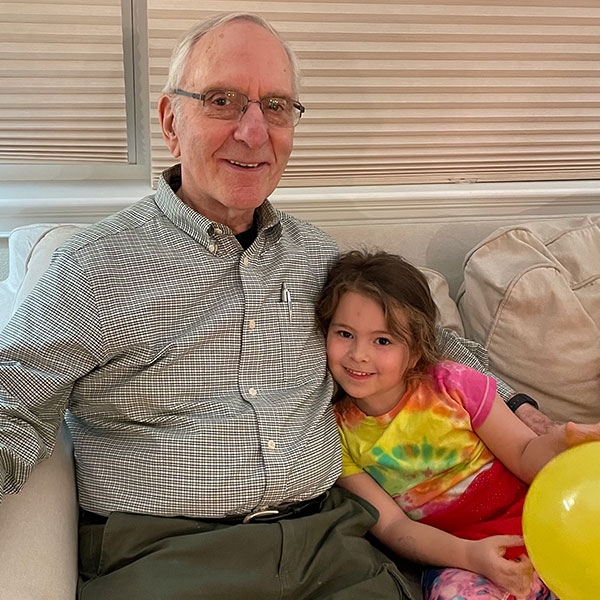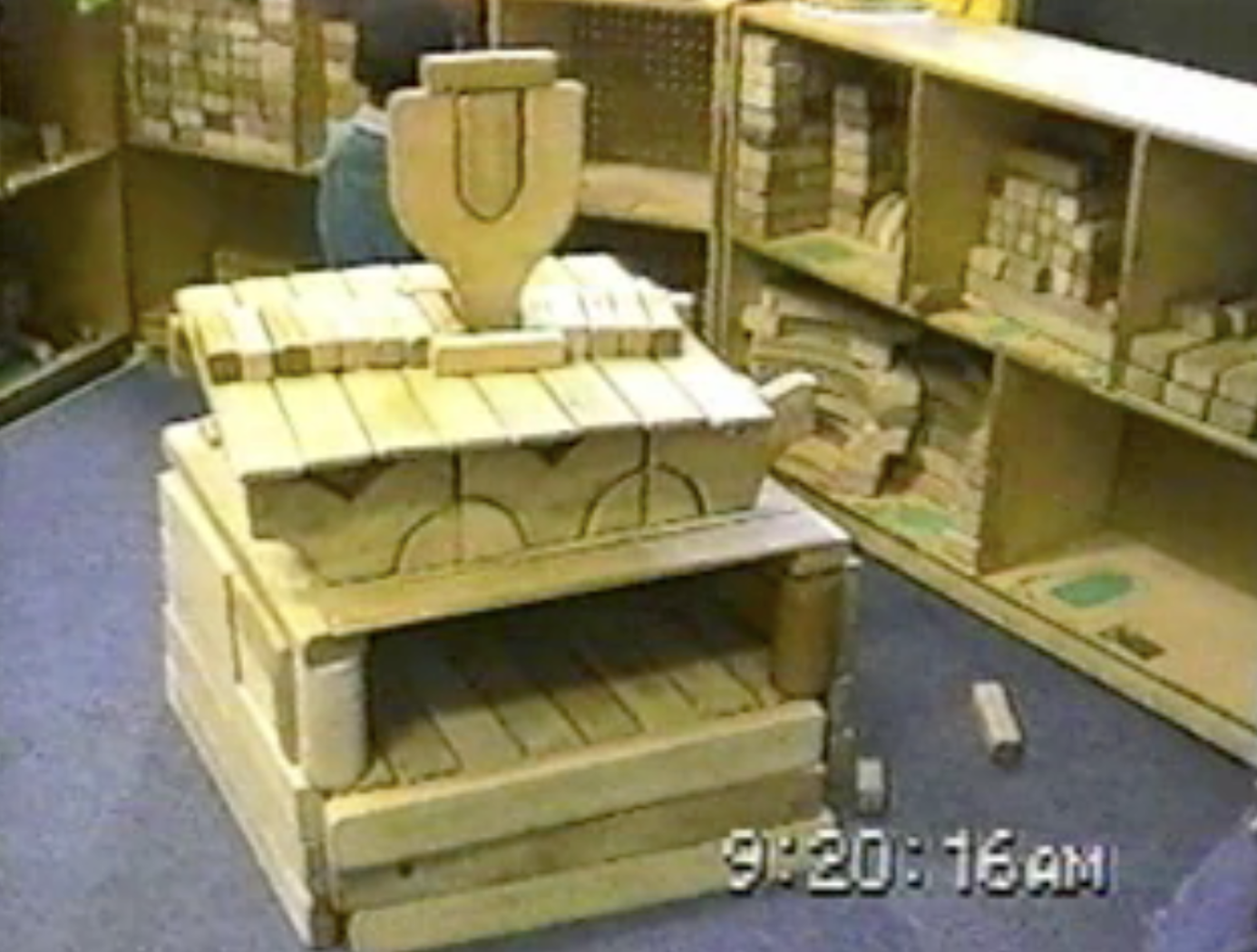
Herbert P. Ginsburg is the Jacob H. Schiff Foundation Professor Emeritus of Psychology and Education at Teachers College, Columbia University. He is the author of Young Children’s Amazing Math: A Guide to Understanding and Supporting Early Learning.
Watch and listen to Ben, around age 4, as he reveals his amazing math. I ask him to give me 8 “bananas.” That is what we had been calling some yellow chips on the table.
Carefully, he points to each chip in the pile in front of him as he says, “One, two, three, four, five.” He pauses and then counts out 3 more to get 8. He doesn’t seem entirely confident in the answer, but I confirm that there are 8.
Next, I place a piece of paper over the collection and ask how many bananas are underneath. He first says, “zero,” apparently referring to the fact that there are no bananas on top of the paper. So I ask him to think about the bananas underneath the paper. He says “six,” again with some uncertainty. I take away the paper and ask him to check. He counts accurately, getting “eight.” I confirm, “So there are eight.”
After he says something that I don’t understand, I pose the problem again. “What if I cover it up again? You just told me there are eight, right?” He agrees. But then when I ask, “How many under here?”, he spreads his arms wide and dramatically proclaims, “I give up.”
Ben does not think the way we adults do. To us, it is obvious that there are eight yellow chips under the paper. But although Ben counted accurately to eight two times, and although I confirmed his answer two times, he does not seem to know that the number of bananas stays the same when they are hidden right in front of him! Ben seems to be in another cognitive universe—a world where eight things are no longer eight things when they cannot be seen. Out of sight, out of mind.
Here is another example of amazing math, this time as two kindergarten boys build a structure with blocks.
Watch the video. You will see that in the background, Alfredo had used four short cylinders (which he later calls “circle things”) and two long planks to create two structures parallel to each other. His friend Kevin comes over to join him. They make two new structures just like Alfredo’s first two. But then Kevin quickly holds up a long, thin plank between the two structures and immediately sees that it is way too short. Alfredo then tries to bridge the structures with his plank. Looking carefully at how each end falls considerably short of the mark, he asks, “How about if it don’t reach?” He immediately answers his own question by quickly moving one of the cylinders closer to the other structure. In fact, it is now in exactly the right spot for the plank to span the distance. Kevin asks, “Now you can reach it?” and Alfredo agrees that he can.
Isn’t that amazing? And this episode is only about the first 13 seconds of the 1-minute video, which as a whole shows that the boys dealt with several basic everyday math concepts:
- Distance—the plank needs to be exactly the right length to go from one cylinder to the other.
- Space—the two original constructions need to be parallel.
- Shape—a cylinder has a circle face, not a square one.
- Location—the toy was under the platform.
- Counting—a certain number of planks.
- Measurement—how many are needed?
- Estimation—maybe two or maybe three.
- Addition—two more planks must be placed.
And finally, after some 20 minutes, the boys eventually produced this “building for cars” which is roughly symmetrical, with one vertical half mirroring (reflecting) the other.

Alfredo and Kevin’s final construction
I have shown you two different kinds of amazing math. Ben uses an unusual and unexpected kind of thinking that results in a strange, wrong answer. By contrast, Alfredo and Kevin surprise us with their rich thinking and competence.
My new book Young Children’s Amazing Math includes over 75 of these short videos—“thinking stories” of children’s math as it develops from about 18 months through kindergarten.
Here are some examples:
- Cassie learns about adding and subtracting as she plays with food on her high chair
- Ethan uses the idea of 1–1 correspondence to guide his moral judgement
- Maya can see number without counting
- Cassie uses math ideas about space and order to “read” a book
- Natalia loves the math—including order and relative size—in the story of the three bears
- Cassie does important engineering to prevent her construction from toppling over
- Rachel uses mental addition to solve an imaginary problem involving rabbits and carrots
- Cassie uses her everyday math to understand the formal math taught in school
In addition to these vivid accounts of children’s amazing math, the book provides guidance on how you can nourish children’s everyday math and even prepare them for schooling, including:
- Very specific activities for use with a child or group of children to help them learn specific concepts
- Talking with a child as they are engaged in solving a problem
- Asking probing questions about a child’s thinking
- Useful models for how adults can promote children’s mathematical thinking
- Examples of what you should try to avoid in dealing with children
Overall, I offer that the best thing you can do is often to leave the child alone to explore. Avoid engaging in too much direct instruction.
Finally, the book gives a useful perspective on how to integrate young children’s informal math with the formal mathematics taught in school. As you well know, school math, unfortunately and all too often, is learned in a rote fashion, and children, parents, and teachers are often afraid of it, or at least want to avoid it. This does not have to be true—my book and the videos in it will show you why.
Professors can use the book in courses including developmental and educational psychology, math education, and early childhood education. In my experience, the videos are extremely appealing to students and bring the class to life. Indeed, some students have told me, years after the class, that they still remember a specific video episode. My students and I used to spend a great deal of time watching and rewatching the videos, and discussing or even arguing about their meaning. On occasion, my students’ interpretations turned out to be even more insightful than my own.
Professional educators who do workshops with parents or teachers can use the book’s videos as the basis for a beginning discussion of young children’s amazing math. The parents or teachers can then observe their children closely, try to identify their everyday math, and even make videos of what they see. Their observations and videos can be the basis for further discussion in their workshops, particularly about the role of parents in fostering young children’s everyday math at home, for example, as they interact with their children during a long summer vacation from school.
I think that parents, teachers, and curious people can benefit from reading (and watching and hearing) the book on their own, apart from workshops or courses. Young children’s everyday math is fascinating and sometimes funny. It has kept me enthralled and amused for a good many years! My wish is that this book can help everyone to appreciate and enjoy children’s amazing mathematical minds.



Comments
This story is such a sweet and honest reminder of how young children engage with math in their own unique ways. I love how Ben’s thinking shows both curiosity and real developing reasoning. Moments like these are a joy to witness and a great reminder to nurture early math skills with patience and encouragement.